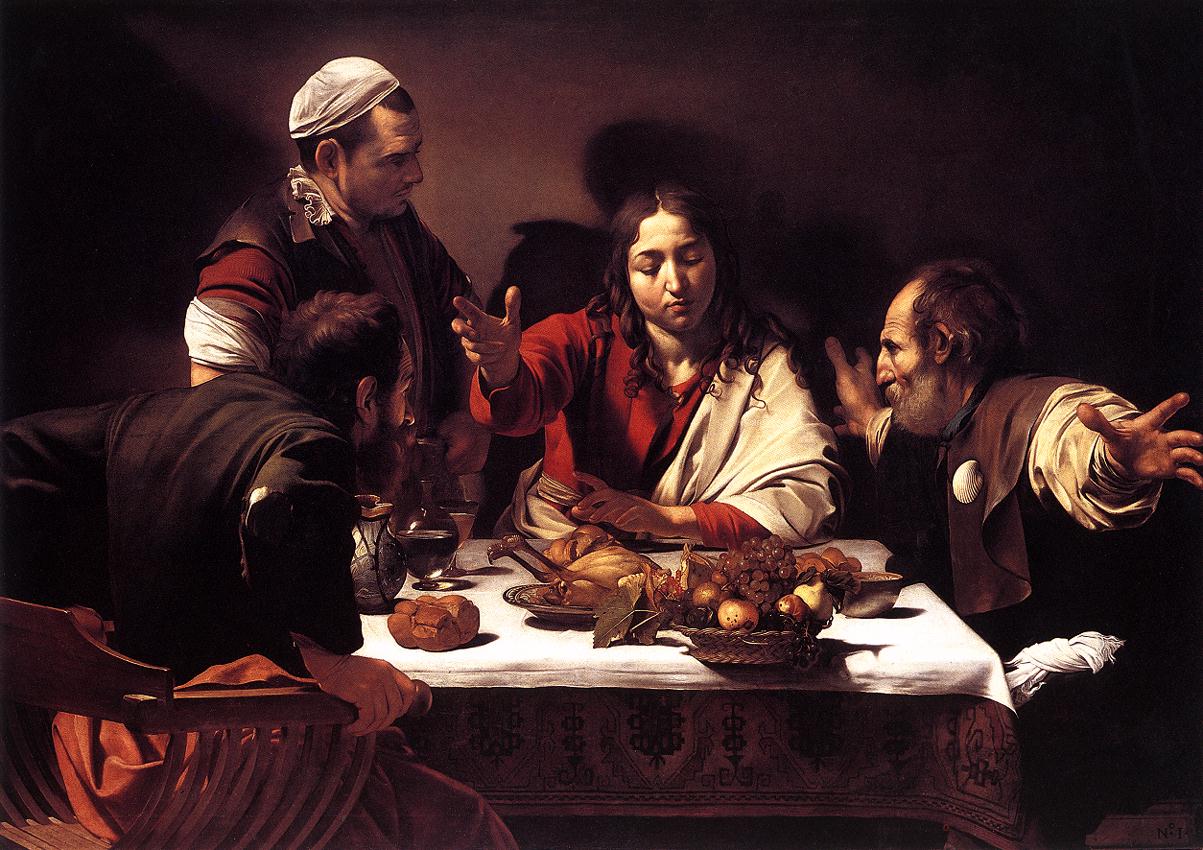- Supper at Emmaus (Caravaggio, London version)
title=Supper at Emmaus
artist=Caravaggio
year=1601
type=Oil on canvas
height=141
width=196,2
museum=National Gallery, London"The Supper at Emmaus" is a painting by the Italian
Baroque masterCaravaggio , executed in1601 . Originally painted for the Roman nobleman Ciriaco Mattei, and later purchased by CardinalScipione Borghese , it is now in the National Gallery inLondon .The painting depicts the moment when the resurrected but incognito
Jesus , reveals himself to two of his disciples (presumed to beLuke andCleophas ). The moment captures whenChrist reveals himself to the astonished disciples, only to soon vanish from their sight (Gospel of Luke 24: 30-31). Luke wears thescallop shell of apilgrim . The other apostle wears torn clothes. Luke gesticulates in a perspectively-challenging extension of arms in and out of the frame of reference. The standing groom, forehead smooth and face in darkness, appears oblivious to the event. The painting is unusual for the life-sized figures, the dark and blank background. The table lays out a still-life meal. Like the world these apostles knew, the basket of food teeters perilously over the edge.", where a group of seated money counters is interrupted by the recruiting Christ. It is also a recurring theme in Caravaggio's paintings to find the sublime interrupting the daily routine. The unexalted humanity is apt for this scene, since the human Jesus has made himself unrecognizable to his disciples, and at once confirms and surmounts his humanity. Caravaggio seems to suggest that perhaps a Jesus could enter our daily encounters. The dark background envelops the tableau.
Caravaggio painted a second version of the "Supper at Emmaus" (now in the Brera Fine Arts Academy,
Milan ) in 1606. By comparison, the gestures of figures are far more restrained , making presence more important than performance. This difference possibly reflects the circumstances of Caravaggio's life at that point (he had fled Rome as an outlaw following the death of Ranuccio Tomassoni), or possibly, recognising the ongoing evolution of his art, in the intervening five years he had come to recognise the value of understatement.ee also
*
Chronology of works by Caravaggio
*The lost painting Jonathan HarrFurther reading
* [http://www.nationalgallery.org.uk/cgi-bin/WebObjects.dll/CollectionPublisher.woa/wa/work?workNumber=NG172 Review of the painting by the National Gallery.]
Wikimedia Foundation. 2010.

